A full listing of IASH's publications can be found in the University's eSpace repository.
Peter Harrison (2015), The Territories of Science and Religion
Peter Harrison
The University of Chicago Press, 2015
 The conflict between science and religion seems indelible, even eternal. Surely two such divergent views of the universe have always been in fierce opposition? Actually, that’s not the case, says Peter Harrison: our very concepts of science and religion are relatively recent, emerging only in the past three hundred years, and it is those very categories, rather than their underlying concepts, that constrain our understanding of how the formal study of nature relates to the religious life.
The conflict between science and religion seems indelible, even eternal. Surely two such divergent views of the universe have always been in fierce opposition? Actually, that’s not the case, says Peter Harrison: our very concepts of science and religion are relatively recent, emerging only in the past three hundred years, and it is those very categories, rather than their underlying concepts, that constrain our understanding of how the formal study of nature relates to the religious life.
In The Territories of Science and Religion, Harrison dismantles what we think we know about the two categories, then puts it all back together again in a provocative, productive new way. By tracing the history of these concepts for the first time in parallel, he illuminates alternative boundaries and little-known relations between them—thereby making it possible for us to learn from their true history, and see other possible ways that scientific study and the religious life might relate to, influence, and mutually enrich each other.
A tour de force by a distinguished scholar working at the height of his powers, The Territories of Science and Religion promises to forever alter the way we think about these fundamental pillars of human life and experience.
Translated into:
Spanish: Los Territorios de la Ciencia y la Religion, tr. Ignacio Silva (Comillas: SalTerrae, 2020)
Portuguese: Os Territórios da Ciência e da Religião, tr. Djair Filho (Viçosa: Ultimo, 2017)
Chinese: 科学与宗教的领土 Translated by Butian Zhang (Beijing: Commercial Press, 2016)
Karin Sellberg, Lena Wanggren, and Kamillea Aghtan, Eds. (2015), Corporeality and Culture: Bodies in Movement
Karin Sellberg, Lena Wanggren, Kamillea Aghtan (Editors)
Routledge, 2015
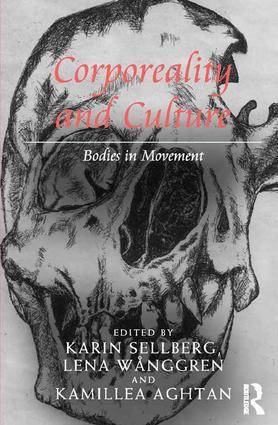 The ’material turn’ in critical theory - and particularly the turn towards the body coupled with scientific insights from biomedicine, biology and physics - is becoming an important path in fields of humanities-based scholarly inquiry. Material and technological philosophies play an increasingly central role in disciplines such as literary studies, cultural studies, history, performance and aesthetics, to name only a few. This edited collection of essays investigates how the material turn finds applications within humanities-based frameworks - focusing on practical reflections and disciplinary responses. It takes as its critical premise the understanding that importation of theoretical viewpoints is never straightforward; rather, a complex, sometimes even fraught, communication takes place between these disciplines at the imperceptible lines where praxis and theory meet, transforming both the landscape of practical engagement and the models of material theory. Presenting a multi- and interdisciplinary consideration of current research on the cultural relationship to living (and non-living) bodies, Corporeality and Culture: Bodies in Movement puts the body in focus. From performance and body modification to film, literature and other cultural technologies, this volume undertakes a significant speculative mapping of the current possibilities for engagement, transformation and variance of embodied movement in relation to scientifically-situated corporealities and materialities in cultural and artistic practices. Time and time again, it finds these ever-shifting modes of being to be inextricably interdependent and coextensive: movement requires embodiment; and embodiment is a form of movement.
The ’material turn’ in critical theory - and particularly the turn towards the body coupled with scientific insights from biomedicine, biology and physics - is becoming an important path in fields of humanities-based scholarly inquiry. Material and technological philosophies play an increasingly central role in disciplines such as literary studies, cultural studies, history, performance and aesthetics, to name only a few. This edited collection of essays investigates how the material turn finds applications within humanities-based frameworks - focusing on practical reflections and disciplinary responses. It takes as its critical premise the understanding that importation of theoretical viewpoints is never straightforward; rather, a complex, sometimes even fraught, communication takes place between these disciplines at the imperceptible lines where praxis and theory meet, transforming both the landscape of practical engagement and the models of material theory. Presenting a multi- and interdisciplinary consideration of current research on the cultural relationship to living (and non-living) bodies, Corporeality and Culture: Bodies in Movement puts the body in focus. From performance and body modification to film, literature and other cultural technologies, this volume undertakes a significant speculative mapping of the current possibilities for engagement, transformation and variance of embodied movement in relation to scientifically-situated corporealities and materialities in cultural and artistic practices. Time and time again, it finds these ever-shifting modes of being to be inextricably interdependent and coextensive: movement requires embodiment; and embodiment is a form of movement.
Leigh Penman, Ed. & Trans. (2015), Cabala. Mirror of Art and Nature. A Critical Edition of the German and Latin Editions, 1615-1616, published by Stephan Michelspacher in Augsburg
Leigh Penman (Editor and Translator)
Ouroboros Press, 2015
 CABALA: SPIEGEL DER KUNST VND NATUR was first published precisely four hundred years ago in the Free Imperial City of Augsburg, located in the Holy Roman Empire. The first edition was printed by Johann Schultes Sr., and published by the enigmatic Tyrolean, Stephan Michelspacher. CABALA remains one of the most fascinating, beautiful and problematic alchemical texts of the early seventeenth century. Its short text, partly in verse-form, describes three steel mirrors forged by the heat of the sun and revealed by the grace of God, which are at least partly metaphorical. When combined together, these mirrors – which reflect the Paracelsian triumvirate of mercury, salt and sulphur – reveal the great Arcanum, or secret of alchemical transmutation. The text is accompanied by four large plates, beautifully engraved by Raphael Custos (1590-1664), which similarly encode the steps of progression to the work of transmutation, and which map onto the four mirrors of the text. The 1616 Latin edition introduces a further layer of complexity, by associating the tract with the Rosicrucian fraternity. Finally, Michelspacher’s dedicatory epistle sheds more light on his own circumstances than on the content of the work.
CABALA: SPIEGEL DER KUNST VND NATUR was first published precisely four hundred years ago in the Free Imperial City of Augsburg, located in the Holy Roman Empire. The first edition was printed by Johann Schultes Sr., and published by the enigmatic Tyrolean, Stephan Michelspacher. CABALA remains one of the most fascinating, beautiful and problematic alchemical texts of the early seventeenth century. Its short text, partly in verse-form, describes three steel mirrors forged by the heat of the sun and revealed by the grace of God, which are at least partly metaphorical. When combined together, these mirrors – which reflect the Paracelsian triumvirate of mercury, salt and sulphur – reveal the great Arcanum, or secret of alchemical transmutation. The text is accompanied by four large plates, beautifully engraved by Raphael Custos (1590-1664), which similarly encode the steps of progression to the work of transmutation, and which map onto the four mirrors of the text. The 1616 Latin edition introduces a further layer of complexity, by associating the tract with the Rosicrucian fraternity. Finally, Michelspacher’s dedicatory epistle sheds more light on his own circumstances than on the content of the work.
EDITIO TRILINGUA: The aim of the present volume is to present readers, for the first time, with reliable editions of the original German (1615, 1616) and Latin (1616) texts of CABALA, accompanied by an annotated English translation of the 1616 German text, together with a historical typsetting the whole offers a definitive and complete critical edition.
Nicholas Heron, Trans. (2015), Stasis: Civil War as a Political Paradigm by Giorgio Agamben
Nicholas Heron (Translator)
Edinburgh University Press, 2015
 Agamben’s genealogy of power in terms of political, philosophical and legal thought.
Agamben’s genealogy of power in terms of political, philosophical and legal thought.
In this inaugural volume of the Edinburgh Encounters in Law and Philosophy series, Giorgio Agamben focuses upon the on-going warfare European state power has waged against its most malignant enemy: civil war itself.
The survival of the State is seen to depend on its ability to preserve the political community from factional enmity. Agamben first investigates the Athenian theme of ‘Stasis’ – the city’s struggle against internal revolt – before turning to a new reading of Hobbes’ Leviathan and its approach to the peril of the commonwealth’s exposure to civil strife, division and revolution.
At the heart of this book is the issue of state powers in their continuous decline – an issue that is key to the renewal of political, philosophical and legal thought.
Jinna Tay and Graeme Turner, Eds. (2015), Television Histories in Asia: Issues and Contexts
Jinna Tay and Graeme Turner (Editors)
Routledge, 2015
 This book presents an analysis of television histories across India, China, Taiwan, Singapore, Indonesia, Japan, Hong Kong, the Philippines, Malaysia and Bhutan. It offers a set of standard data on the history of television’s cultural, industrial and political structures in each specific national context, allowing for cross-regional comparative analysis. Each chapter presents a case study on a salient aspect of contemporary television culture of the nation in question, such as analyses of ideology in television content in Japan and Singapore, and transformations of industry structure vis-à-vis state versus market control in China and Taiwan. The book provides a comprehensive overview of TV histories in Asia as well as a survey of current issues and concerns in Asian television cultures and their social and political impact.
This book presents an analysis of television histories across India, China, Taiwan, Singapore, Indonesia, Japan, Hong Kong, the Philippines, Malaysia and Bhutan. It offers a set of standard data on the history of television’s cultural, industrial and political structures in each specific national context, allowing for cross-regional comparative analysis. Each chapter presents a case study on a salient aspect of contemporary television culture of the nation in question, such as analyses of ideology in television content in Japan and Singapore, and transformations of industry structure vis-à-vis state versus market control in China and Taiwan. The book provides a comprehensive overview of TV histories in Asia as well as a survey of current issues and concerns in Asian television cultures and their social and political impact.
Amy Shields Dobson (2015), Postfeminist Digital Cultures: Femininity, Social Media, and Self-representation
Amy Shields Dobson
Palgrave Macmillan, 2015
 This book explores the controversial social media practices engaged in by girls and young women, including sexual self-representations on social network sites, sexting, and self-harm vlogs. Informed by feminist media and cultural studies, Dobson delves beyond alarmist accounts to ask what it is we really fear about these practices.
This book explores the controversial social media practices engaged in by girls and young women, including sexual self-representations on social network sites, sexting, and self-harm vlogs. Informed by feminist media and cultural studies, Dobson delves beyond alarmist accounts to ask what it is we really fear about these practices.
Peter Holbrook (2015), English Renaissance Tragedy: Ideas of Freedom
Peter Holbrook
Bloomsbury Publishing, 2015
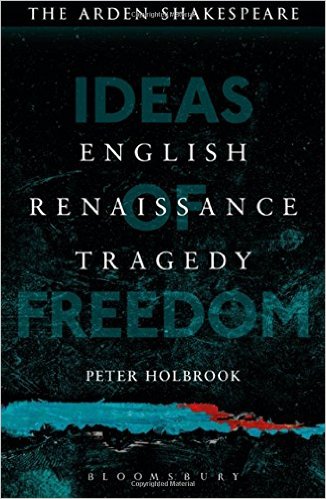 Tragedy delivers bad news—it tells us, for one thing, that we are not in control of our own lives. So why should we pay attention to it, especially in a democratic culture in which autonomy and self-direction are prized goals? English Renaissance Tragedy: Ideas of Freedom attends to this question in the context of the drama written in and around the time of Shakespeare. Arguing that tragedy of this period engages our interest in matters of fundamental importance, Peter Holbrook explores the ways in which the genre raises and debates (but by no means resolves) a range of questions to do with human liberty. Part One offers an exploration of freedom, tragedy, and English Renaissance literary and political culture, while Part Two gives a series of fifteen in-depth examinations of plays by Shakespeare, Marlowe, Webster and their contemporaries, including Doctor Faustus, Edward II, Hamlet, Othello, King Lear, The White Devil and The Duchess of Malfi.
Tragedy delivers bad news—it tells us, for one thing, that we are not in control of our own lives. So why should we pay attention to it, especially in a democratic culture in which autonomy and self-direction are prized goals? English Renaissance Tragedy: Ideas of Freedom attends to this question in the context of the drama written in and around the time of Shakespeare. Arguing that tragedy of this period engages our interest in matters of fundamental importance, Peter Holbrook explores the ways in which the genre raises and debates (but by no means resolves) a range of questions to do with human liberty. Part One offers an exploration of freedom, tragedy, and English Renaissance literary and political culture, while Part Two gives a series of fifteen in-depth examinations of plays by Shakespeare, Marlowe, Webster and their contemporaries, including Doctor Faustus, Edward II, Hamlet, Othello, King Lear, The White Devil and The Duchess of Malfi.
Graeme Turner (2016), Re-Inventing the Media
Graeme Turner
Routledge, 2016
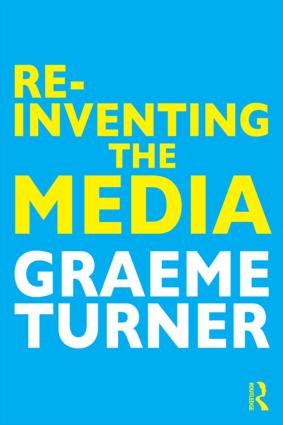 Re-Inventing the Media provides a highly original re-thinking of media studies for the contemporary post-broadcast, post-analogue, and post-mass media era.
Re-Inventing the Media provides a highly original re-thinking of media studies for the contemporary post-broadcast, post-analogue, and post-mass media era.
While media and cultural studies has made much of the changes to the media landscape that have come from digital technologies, these constitute only part of the transformations that have taken place in what amounts of a reinvention of the media over the last two decades.
Graeme Turner takes on the task of re-thinking how media studies approaches the whole of the contemporary media-scape by focusing on three large, cross-platform, and transnational themes: the decline of the mass media paradigm, the ongoing restructuring of the relations between the media and the state, and the structural and social consequences of celebrity culture.
By addressing the fact that the reinvention of the media is not simply a matter of globalising markets or the take-up of technological change, Turner is able to explore the more fundamental movements and widespread trends that have significantly influenced the character of what the contemporary media have become, how it is structured, and how it is used.
Re-Inventing the Media is a must-read for both students and scholars of media, culture and communication studies.
Peter Holbrook and Paul Edmondson, Eds. (2016), Shakespeare's Creative Legacies: Artists, Writers, Performers, Readers
Peter Holbrook (co-editor with Paul Edmondson)
Bloomsbury Publishing, 2016
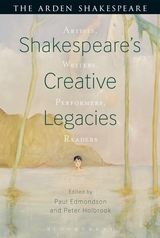 We celebrate Shakespeare as a creator of plays and poems, characters and ideas, words and worlds. But so too, in the four centuries since his death in 1616, have thinkers, writers, artists and performers recreated him. Readers of this book are invited to explore Shakespeare’s afterlife on the stage and on the screen, in poetry, fiction, music and dance, as well as in cultural and intellectual life. A series of concise introductory essays are here combined with personal reflections by prominent contemporary practitioners of the arts. At once a celebration and a critical response, the book explores Shakespeare as a global cultural figure who continues to engage artists, audiences and readers of all kinds.
We celebrate Shakespeare as a creator of plays and poems, characters and ideas, words and worlds. But so too, in the four centuries since his death in 1616, have thinkers, writers, artists and performers recreated him. Readers of this book are invited to explore Shakespeare’s afterlife on the stage and on the screen, in poetry, fiction, music and dance, as well as in cultural and intellectual life. A series of concise introductory essays are here combined with personal reflections by prominent contemporary practitioners of the arts. At once a celebration and a critical response, the book explores Shakespeare as a global cultural figure who continues to engage artists, audiences and readers of all kinds.
Philip C. Almond (2016), Afterlife: A History of Life After Death
Philip C. Almond
I.B. Taurus, 2016
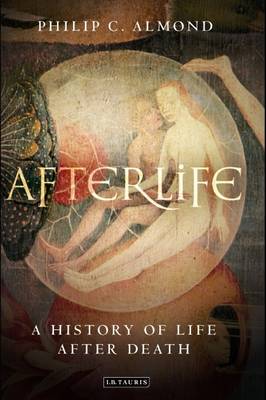 For in that sleep of death what dreams may come? The end of life has never meant the extinction of hope. People perpetually have yearned for, and often been terrified by, continuance beyond the horizon of mortality. Ranging across time and space, Philip Almond here takes his readers on a remarkable journey to worlds both of torment and delight. He travels to the banks of the Styx, where Charon the grizzled boatman ferries a departing spirit across the river only if a gold obol is first placed for payment on the tongue of its corpse. He transports us to the legendary Isles of the Blessed, walks the hallowed ground of the Elysian Fields and plumbs the murky depths of Tartarus, primordial dungeon of the Titans. The pitiable souls of the damned are seen to clog the soot-filled caverns of Lucifer even as the elect ascend to Paradise. Including medieval fears for the fate of those consumed by cannibals, early modern ideas about the Last Day and modern scientific explorations of the domains of the dead, this first full treatment of the afterlife in Western thought evokes many rich imaginings of Heaven, Hell, Purgatory and Limbo.
For in that sleep of death what dreams may come? The end of life has never meant the extinction of hope. People perpetually have yearned for, and often been terrified by, continuance beyond the horizon of mortality. Ranging across time and space, Philip Almond here takes his readers on a remarkable journey to worlds both of torment and delight. He travels to the banks of the Styx, where Charon the grizzled boatman ferries a departing spirit across the river only if a gold obol is first placed for payment on the tongue of its corpse. He transports us to the legendary Isles of the Blessed, walks the hallowed ground of the Elysian Fields and plumbs the murky depths of Tartarus, primordial dungeon of the Titans. The pitiable souls of the damned are seen to clog the soot-filled caverns of Lucifer even as the elect ascend to Paradise. Including medieval fears for the fate of those consumed by cannibals, early modern ideas about the Last Day and modern scientific explorations of the domains of the dead, this first full treatment of the afterlife in Western thought evokes many rich imaginings of Heaven, Hell, Purgatory and Limbo.
Translated into:
Hungarian: Élet A Halál Után: A Túlvilág Rövid Története. Tr. András Barabás (Corvina, 2018).
Adrian Athique (2016), Transnational Audiences: Media Reception on a Global Scale
Adrian Athique
Wiley, 2016
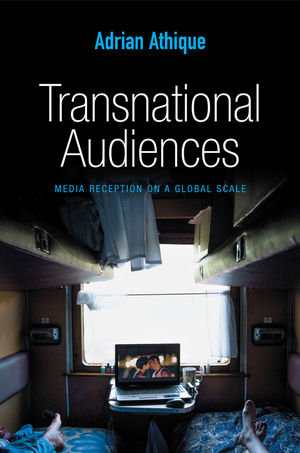 In an interactive and densely connected world, transnational communication has become a central feature of everyday life. Taking account of a variety of media formats and different regions of the world, Adrian Athique provides a much-needed critical exploration of conceptual approaches to media reception on a global scale.
In an interactive and densely connected world, transnational communication has become a central feature of everyday life. Taking account of a variety of media formats and different regions of the world, Adrian Athique provides a much-needed critical exploration of conceptual approaches to media reception on a global scale.
Engaging both the historical foundations and contemporary concerns of audience research, Athique prompts us to reconsider our contemporary media experience within a transnational frame. In the process, he provides valuable insights on culture and belonging, power and imagination.
Beautifully written and strongly argued, Transnational Audiences: Media Reception on a Global Scale will be essential reading for students and teachers of global media, culture and communications.
Mitchell Rolls and Anna Johnston (2016), Travelling Home, 'Walkabout Magazine' and Mid-Twentieth-Century Australia
Anna Johnston (with Mitchell Rolls)
Anthem Press, 2016
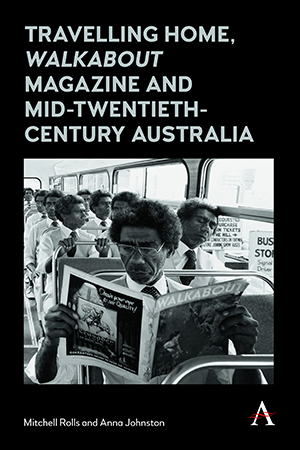 'Travelling Home' provides a detailed analysis of the contribution that the mid twentieth-century 'Walkabout' magazine made to Australia’s cultural history. Spanning five central decades of the twentieth century (1934-1974), 'Walkabout' was integral to Australia’s sense of itself as a nation. By advocating travel—both vicarious and actual—'Walkabout' encouraged settler Australians to broaden their image of the nation and its place in the Pacific region. In this way, 'Walkabout' explicitly aimed to make its readers feel at home in their country, as well as including a diverse picture of Aboriginal and Pacific cultures. Like National Geographic in the United States, Walkabout presented a cornucopia of images and information that was accessible to a broad readership.
'Travelling Home' provides a detailed analysis of the contribution that the mid twentieth-century 'Walkabout' magazine made to Australia’s cultural history. Spanning five central decades of the twentieth century (1934-1974), 'Walkabout' was integral to Australia’s sense of itself as a nation. By advocating travel—both vicarious and actual—'Walkabout' encouraged settler Australians to broaden their image of the nation and its place in the Pacific region. In this way, 'Walkabout' explicitly aimed to make its readers feel at home in their country, as well as including a diverse picture of Aboriginal and Pacific cultures. Like National Geographic in the United States, Walkabout presented a cornucopia of images and information that was accessible to a broad readership.
Given its wide availability and distribution, together with its accessible and entertaining content, 'Walkabout' changed how Australia was perceived, and the magazine is recalled with nostalgic fondness by most if not all of its former readers. Many urban readers learnt about Indigenous peoples and cultures through the many articles on these topics, and although these representations now seem dated and at times discriminatory, they provide a lens through which to see how contemporary attitudes about race and difference were defined and negotiated.
Drawing on interdisciplinary scholarship, 'Travelling Home' engages with key questions in literary, cultural, and Australian studies about national identity and modernity. The book’s diverse topics demonstrate how 'Walkabout' canvassed subtle and shifting fields of representation. Grounded in the archival history of the magazine’s production, the book addresses questions key to Australian cultural history. These include an investigation of middle-brow print culture and the writers who contributed to Walkabout, and the role of 'Walkabout' in presenting diverse and often conflicting information about Indigenous and other non-white cultures. Other chapters examine how popular natural history enabled scientists and readers alike to define an unique Australian landscape, and to debate how a modernising nation could preserve its bush while advocating industrial and agricultural development. While the nation is central to 'Walkabout' magazine’s imagined world, Australia is always understood to be part of the Pacific region in complex ways that included neo-colonialism, and Pacific content was prominent in the magazine. Through complex and nuanced readings of Australian literary and cultural history, 'Travelling Home' reveals how vernacular understandings of key issues in Australia’s cultural history were developed and debated in this accessible and entertaining magazine.
Peter Harrison (2016), Η Πτώση και η ανάδυση της Eπιστήμης
Peter Harrison, 2016
 Η Πτώση και η ανάδυση της Eπιστήμης. Translated by Constantine Takis (Thessalonki:Torque, 2016). Greek translation of The Fall of Man and the Foundations of Science (Cambridge University Press, 2009).
Η Πτώση και η ανάδυση της Eπιστήμης. Translated by Constantine Takis (Thessalonki:Torque, 2016). Greek translation of The Fall of Man and the Foundations of Science (Cambridge University Press, 2009).
Charlotte-Rose Millar (2017), Witchcraft, the Devil, and Emotions in Early Modern England
Charlotte-Rose Millar
Routledge, 2017
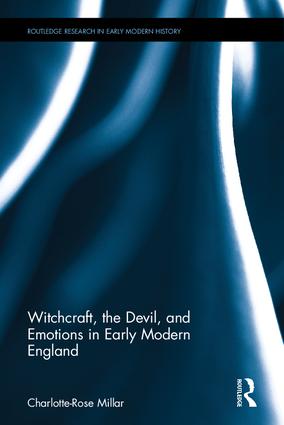 This book represents the first systematic study of the role of the Devil in English witchcraft pamphlets for the entire period of state-sanctioned witchcraft prosecutions (1563-1735). It provides a rereading of English witchcraft, one which moves away from an older historiography which underplays the role of the Devil in English witchcraft and instead highlights the crucial role that the Devil, often in the form of a familiar spirit, took in English witchcraft belief. One of the key ways in which this book explores the role of the Devil is through emotions. Stories of witches were made up of a complex web of emotionally implicated accusers, victims, witnesses, and supposed perpetrators. They reveal a range of emotional experiences that do not just stem from malefic witchcraft but also, and primarily, from a witch’s links with the Devil. This book, then, has two main objectives. First, to suggest that English witchcraft pamphlets challenge our understanding of English witchcraft as a predominantly non-diabolical crime, and second, to highlight how witchcraft narratives emphasized emotions as the primary motivation for witchcraft acts and accusations.
This book represents the first systematic study of the role of the Devil in English witchcraft pamphlets for the entire period of state-sanctioned witchcraft prosecutions (1563-1735). It provides a rereading of English witchcraft, one which moves away from an older historiography which underplays the role of the Devil in English witchcraft and instead highlights the crucial role that the Devil, often in the form of a familiar spirit, took in English witchcraft belief. One of the key ways in which this book explores the role of the Devil is through emotions. Stories of witches were made up of a complex web of emotionally implicated accusers, victims, witnesses, and supposed perpetrators. They reveal a range of emotional experiences that do not just stem from malefic witchcraft but also, and primarily, from a witch’s links with the Devil. This book, then, has two main objectives. First, to suggest that English witchcraft pamphlets challenge our understanding of English witchcraft as a predominantly non-diabolical crime, and second, to highlight how witchcraft narratives emphasized emotions as the primary motivation for witchcraft acts and accusations.
Paperback edition 2019.
Reporduced in part in Darren Oldridge (ed.) The Witchcraft Reader, 3rd ed., Routledge 2019.
Peter Harrison (2017), Cuestions de Ciencia y Religión
Peter Harrison, 2017
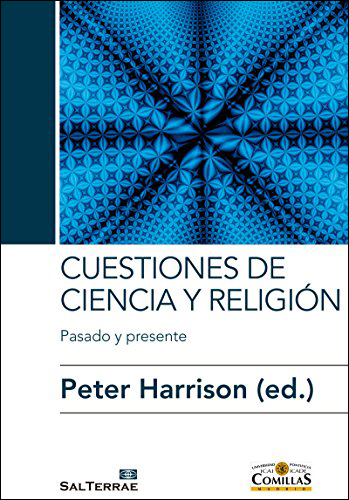 Cuestions de Ciencia y Religión, tr. Ignacio Silva (Madrid: Loyola Grupo de Comunicacion, 2017). Issues in Science and Religion: Past and Present, Spanish tr. of The Cambridge Companion to Science and Religion (Cambridge, 2010)
Cuestions de Ciencia y Religión, tr. Ignacio Silva (Madrid: Loyola Grupo de Comunicacion, 2017). Issues in Science and Religion: Past and Present, Spanish tr. of The Cambridge Companion to Science and Religion (Cambridge, 2010)
Ian Hesketh (2017), Victorian Jesus: J.R. Seeley, Religion, and the Cultural Significance of Anonymity
Ian Hesketh
University of Toronto Press, 2017
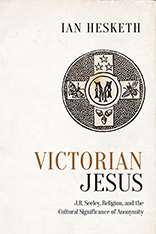 Ecce Homo: A Survey in the Life and Work of Jesus Christ, published anonymously in 1865, alarmed some readers and delighted others by its presentation of a humanitarian view of Christ and early Christian history. Victorian Jesus explores the relationship between historian J. R. Seeley and his publisher Alexander Macmillan as they sought to keep Seeley’s authorship a secret while also trying to exploit the public interest.
Ecce Homo: A Survey in the Life and Work of Jesus Christ, published anonymously in 1865, alarmed some readers and delighted others by its presentation of a humanitarian view of Christ and early Christian history. Victorian Jesus explores the relationship between historian J. R. Seeley and his publisher Alexander Macmillan as they sought to keep Seeley’s authorship a secret while also trying to exploit the public interest.
Ian Hesketh highlights how Ecce Homo's reception encapsulates how Victorians came to terms with rapidly changing religious views in the second half of the nineteenth century. Hesketh critically examines Seeley’s career and public image, and the publication and reception of his controversial work. Readers and commentators sought to discover the author’s identity in order to uncover the hidden meaning of the book, and this engendered a lively debate about the ethics of anonymous publishing. In Victorian Jesus, Ian Hesketh argues for the centrality of this moment in the history of anonymity in book and periodical publishing throughout the century.
Peter Cryle and Elizabeth Stephens (2017), Normality: A Critical Genealogy
Peter Cryle and Elizabeth Stephens
University of Chicago Press, 2017
 The concept of normal is so familiar that it can be hard to imagine contemporary life without it. Yet the term entered everyday speech only in the mid-twentieth century. Before that, it was solely a scientific term used primarily in medicine to refer to a general state of health and the orderly function of organs. But beginning in the middle of the twentieth century, normal broke out of scientific usage, becoming less precise and coming to mean a balanced condition to be maintained and an ideal to be achieved.
The concept of normal is so familiar that it can be hard to imagine contemporary life without it. Yet the term entered everyday speech only in the mid-twentieth century. Before that, it was solely a scientific term used primarily in medicine to refer to a general state of health and the orderly function of organs. But beginning in the middle of the twentieth century, normal broke out of scientific usage, becoming less precise and coming to mean a balanced condition to be maintained and an ideal to be achieved.
In Normality, Peter Cryle and Elizabeth Stephens offer an intellectual and cultural history of what it means to be normal. They explore the history of how communities settle on any one definition of the norm, along the way analyzing a fascinating series of case studies in fields as remote as anatomy, statistics, criminal anthropology, sociology, and eugenics. Cryle and Stephens argue that since the idea of normality is so central to contemporary disability, gender, race, and sexuality studies, scholars in these fields must first have a better understanding of the context for normality. This pioneering book moves beyond binaries to explore for the first time what it does—and doesn’t—mean to be normal.
Nicholas Heron (2017), Liturgical Power: Between Economic and Political Theology
Nicholas Heron
Fordham University Press, 2017
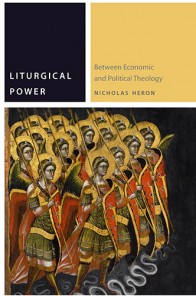 Is Christianity exclusively a religious phenomenon, which must separate itself from all things political, or do its concepts actually underpin secular politics? To this question, which animated the twentieth-century debate on political theology, Liturgical Power advances a third alternative. Christian anti-politics, Heron contends, entails its own distinct conception of politics. Yet this politics, he argues, assumes the form of what today we call “administration,” but which the ancients termed “economics.” The book’s principal aim is thus genealogical: it seeks to understand our current conception of government in light of an important but rarely acknowledged transformation in the idea of politics brought about by Christianity.
Is Christianity exclusively a religious phenomenon, which must separate itself from all things political, or do its concepts actually underpin secular politics? To this question, which animated the twentieth-century debate on political theology, Liturgical Power advances a third alternative. Christian anti-politics, Heron contends, entails its own distinct conception of politics. Yet this politics, he argues, assumes the form of what today we call “administration,” but which the ancients termed “economics.” The book’s principal aim is thus genealogical: it seeks to understand our current conception of government in light of an important but rarely acknowledged transformation in the idea of politics brought about by Christianity.
This transformation in the idea of politics precipitates in turn a concurrent shift in the organization of power; an organization whose determining principle, Heron contends, is liturgy—understood in the broad sense as “public service.” Whereas until now only liturgy’s acclamatory dimension has made the concept available for political theory, Heron positions it more broadly as a technique of governance. What Christianity has bequeathed to political thought and forms, he argues, is thus a paradoxical technology of power that is grounded uniquely in service.
Nicholas Luke (2018), Shakespearean Arrivals: The Birth of Character
Nicholas Luke
Cambridge University Press, 2018
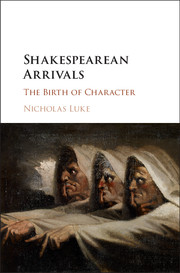 In this distinctive study, Nicholas Luke explores the abiding power of Shakespeare's tragedies by suggesting an innovative new model of his character creation. Rather than treating characters as presupposed beings, Luke shows how they arrive as something more than functional dramatis personae - how they come to life as 'subjects' - through Shakespeare's orchestration of transformational dramatic events. Moving beyond dominant critical modes, Luke combines compelling close readings of Romeo and Juliet, Othello, Hamlet, Macbeth, and King Lear with an accessible analysis of thinkers such as Badiou, Žižek, Bergson, Whitehead and Latour, and the 'adventist' Christian tradition flowing from Saint Paul through Luther to Kierkegard. Representing a significant intervention into the way we encounter Shakespeare's tragic figures, the book argues for a subjectivity which is not singular or abiding, but perilous and leaping.
In this distinctive study, Nicholas Luke explores the abiding power of Shakespeare's tragedies by suggesting an innovative new model of his character creation. Rather than treating characters as presupposed beings, Luke shows how they arrive as something more than functional dramatis personae - how they come to life as 'subjects' - through Shakespeare's orchestration of transformational dramatic events. Moving beyond dominant critical modes, Luke combines compelling close readings of Romeo and Juliet, Othello, Hamlet, Macbeth, and King Lear with an accessible analysis of thinkers such as Badiou, Žižek, Bergson, Whitehead and Latour, and the 'adventist' Christian tradition flowing from Saint Paul through Luther to Kierkegard. Representing a significant intervention into the way we encounter Shakespeare's tragic figures, the book argues for a subjectivity which is not singular or abiding, but perilous and leaping.
- Proposes a new model of Shakespeare's tragic character
- Engages critically and creatively with both contemporary and early modern notions of the self
- Presents a close and original reading of Shakespeare's major tragedies (Romeo and Juliet, Othello, Hamlet, Macbeth, King Lear)
Adrian Athique, Vibodh Parthasarathi, and S.V. Srinivas, Eds. (2018), The Indian Media Economy (2-volume set)
Edited by Adrian Athique, Vibodh Parthasarathi, and S.V. Srinivas
Oxford University Press India, 2018
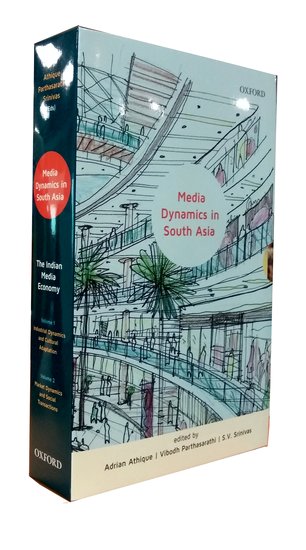 Part of the Media Dynamics in South Asia series.
Part of the Media Dynamics in South Asia series.
Volume 1: Industrial Dynamics and Cultural Adaptation
Industrial Dynamics and Cultural Adaptation illustrates the distinctive industrial dynamics of India’s media economy, tracking the deeply embedded cultural, political, and economic forces that determine its everyday operation. The selection of essays serves to demonstrate the unique patterns of development and the complex field of exchanges that have constituted India’s media economy.
Volume 2: Market Dynamics and Social Transactions
Market Dynamics and Social Transactions provides a comprehensive analysis of the interlocking markets that constitute the media economy, focusing upon its particular commodity forms, labour conditions, and spaces of consumption. Taking account of a rich set of case studies, this volume argues for the necessary consideration of multiple and interdependent markets in explicating our everyday encounters with media.
Paperback: 584 pages
Publisher: OUP India (29 December 2017)
Language: English
ISBN-10: 0199482659
ISBN-13: 978-0199482658
Package Dimensions: 22 x 14.4 x 4.2 cm
Peter Harrison, Ed. (2018), Narratives of Secularization
Edited by Peter Harrison
Routledge, 2018
 It is increasingly clear that histories of secularization are not simply dispassionate descriptions of the decline of religious belief and practice in the West. Rather, such narratives often seek to celebrate secularization, promote some version of it, lament it, or otherwise oppose it in favour of a programme of desecularization or resacralization. The aim of this book is to identify some of the major genres of the history of secularization and to explore their historical contexts, normative commitments, and tendential purposes. The contributors to the volume offer different perspectives on these questions, not least because a number of them are themselves participants in the cultural-political programs described above. The primary purpose of this book, however, is the identification of such programs rather than their promotion. Overall, the collection seeks to bring analytical clarity to ongoing debates about secularization and help explain the co-existence of apparently conflicting stories about the origins of Western modernity. This book was originally published as a special issue of the Intellectual History Review journal.
It is increasingly clear that histories of secularization are not simply dispassionate descriptions of the decline of religious belief and practice in the West. Rather, such narratives often seek to celebrate secularization, promote some version of it, lament it, or otherwise oppose it in favour of a programme of desecularization or resacralization. The aim of this book is to identify some of the major genres of the history of secularization and to explore their historical contexts, normative commitments, and tendential purposes. The contributors to the volume offer different perspectives on these questions, not least because a number of them are themselves participants in the cultural-political programs described above. The primary purpose of this book, however, is the identification of such programs rather than their promotion. Overall, the collection seeks to bring analytical clarity to ongoing debates about secularization and help explain the co-existence of apparently conflicting stories about the origins of Western modernity. This book was originally published as a special issue of the Intellectual History Review journal.
Hardcover: 186 pages
Publisher: Routledge; 1 edition (December 13, 2017)
Language: English
ISBN-10: 1138563560
ISBN-13: 978-1138563568
Tim Mehigan and Christian Moser, Eds. (2018), The Intellectual Landscape in the Works of J. M. Coetzee
Edited by Tim Mehigan and Christian Moser
Camden House, 2018
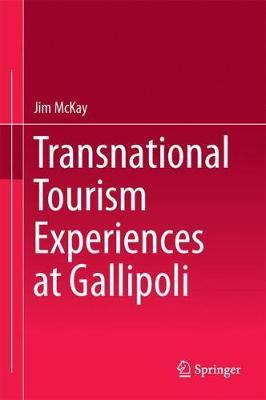 New essays examining the intellectual allegiances of Coetzee, arguably the most decorated and critically acclaimed writer of fiction in English today and a deeply intellectual and philosophical writer.
New essays examining the intellectual allegiances of Coetzee, arguably the most decorated and critically acclaimed writer of fiction in English today and a deeply intellectual and philosophical writer.
Arguably the most decorated and critically acclaimed writer of today, J. M. Coetzee is a deeply intellectual writer. Yet while just about everyone who comes to Coetzee's writing is aware that the visible superstructure of his works is moved from below by a vast substructure of ideas, we are still far from grasping Coetzee's intellectual allegiances as a whole. This book sets out to examine these allegiances in ways not attempted before, by bringing leading figures in the philosophy of literary fiction and ethics together with leading Coetzee scholars. The book is organized into three parts: the first part evaluates Coetzee with respect to notions of truth and justification. At issue is how the reader is to understand the ground on which Coetzee builds his ethical commitments. The second part considers the problem of language, in which ethics is rooted and on which it depends. The chapters of the third part position Coetzee's writing with respect to notions of social and moral solidarity, where, in regard to literature as such or experience as such, philosophy and literature together exercise an unrivaled right to be heard.
Contributors: Elisa Aaltola, Derek Attridge, David Attwell, Maria Boletsi, Carrol Clarkson, Simon During, Patrick Hayes, Alexander Honold, Anton Leist, Tim Mehigan, Christian Moser, Robert B. Pippin, Robert Stockhammer, Markus Winkler, Martin Woessner.
Series: Studies in English and American Literature and Culture
Hardcover: 358 pages
Publisher: Camden House (March 1, 2018)
Language: English
ISBN-10: 1571139761
ISBN-13: 978-1571139764
Product Dimensions: 6.2 x 1 x 9.2 inches
David Rowe, Graeme Turner, and Emma Waterton, Eds. (2018), Making Culture: Commercialisation, Transnationalism, and the State of ‘Nationing’ in Contemporary Australia
Edited by David Rowe, Graeme Turner, and Emma Waterton
Routledge, 2018
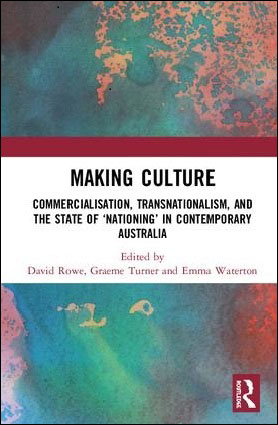 Making Culture provides an in-depth discussion of Australia’s relationship between the building of national cultural identity – or ‘nationing’ – and the country’s cultural production and consumption. With the 1994 national cultural policy Creative Nation as a starting point for many of the essays included in this collection, the book investigates transformations within Australia’s various cultural fields, exploring the implications of nationing and the gradual movement away from it. Underlying these analyses are the key questions and contradictions confronting any modern nation-state that seeks to develop and defend a national culture while embracing the transnational and the global.
Making Culture provides an in-depth discussion of Australia’s relationship between the building of national cultural identity – or ‘nationing’ – and the country’s cultural production and consumption. With the 1994 national cultural policy Creative Nation as a starting point for many of the essays included in this collection, the book investigates transformations within Australia’s various cultural fields, exploring the implications of nationing and the gradual movement away from it. Underlying these analyses are the key questions and contradictions confronting any modern nation-state that seeks to develop and defend a national culture while embracing the transnational and the global.
Including topics such as publishing, sport, music, tourism, art, Indigeneity, television, heritage and the influence of digital technology and output, Making Culture is an essential volume for students and scholars within Australian and Cultural studies.
Hardcover: 184 pages
Publisher: Routledge; 1 edition (April 30, 2018)
Language: English
ISBN-10: 1138094129
ISBN-13: 978-1138094123
Product Dimensions: 6.1 x 0.5 x 9.2 inches
Philip C. Almond (2018), God: A New Biography
Philip C. Almond
I.B. Taurus, 2018
 In this elegant new book, the sequel to his earlier, much praised treatment of the Devil, Philip Almond reveals that - whether in Judaism, Christianity or Islam - God is seen to be at once utterly beyond our world yet at the same earnestly desiring to be at one with it. In the Christian chapter of this story the paradox arguably reaches its improbable zenith: in the fragile form of a human being the infinite became finite, the eternal temporal. The way these and other metaphysical tensions have been understood is, the author demonstrates, the key to unlocking the entire history of religion in the West. Expertly placing the narrative of divine presence within the wider history of ideas, Almond suggests that the notion of a deity has been the single greatest conundrum of medieval and modern civilization. In this rich, nuanced appraisal, 'God' is shown to be more complex and fascinating than ever before.
In this elegant new book, the sequel to his earlier, much praised treatment of the Devil, Philip Almond reveals that - whether in Judaism, Christianity or Islam - God is seen to be at once utterly beyond our world yet at the same earnestly desiring to be at one with it. In the Christian chapter of this story the paradox arguably reaches its improbable zenith: in the fragile form of a human being the infinite became finite, the eternal temporal. The way these and other metaphysical tensions have been understood is, the author demonstrates, the key to unlocking the entire history of religion in the West. Expertly placing the narrative of divine presence within the wider history of ideas, Almond suggests that the notion of a deity has been the single greatest conundrum of medieval and modern civilization. In this rich, nuanced appraisal, 'God' is shown to be more complex and fascinating than ever before.
Jim McKay (2018), Transnational Tourism Experiences at Gallipoli
Jim McKay
Springer, 2018
 This book offers a fresh account of the Anzac myth and the bittersweet emotional experience of Gallipoli tourists. Challenging the straightforward view of the Anzac obsession as a kind of nationalistic military Halloween, it shows how transnational developments in tourism and commemoration have created the conditions for a complex, dissonant emotional experience of sadness, humility, anger, pride and empathy among Anzac tourists. Drawing on the in-depth testimonies of travellers from Australia and New Zealand, McKay shines a new and more complex light on the history and cultural politics of the Anzac myth. As well as making a ground breaking, empirically-based intervention into the culture wars, this book offers new insights into the global memory boom and transnational developments in backpacker tourism, sports tourism and “dark” or “dissonant” tourism.
This book offers a fresh account of the Anzac myth and the bittersweet emotional experience of Gallipoli tourists. Challenging the straightforward view of the Anzac obsession as a kind of nationalistic military Halloween, it shows how transnational developments in tourism and commemoration have created the conditions for a complex, dissonant emotional experience of sadness, humility, anger, pride and empathy among Anzac tourists. Drawing on the in-depth testimonies of travellers from Australia and New Zealand, McKay shines a new and more complex light on the history and cultural politics of the Anzac myth. As well as making a ground breaking, empirically-based intervention into the culture wars, this book offers new insights into the global memory boom and transnational developments in backpacker tourism, sports tourism and “dark” or “dissonant” tourism.
Hardcover: 185 pages
Publisher: Springer; 1st ed. 2018 edition (May 25, 2018)
Language: English
ISBN-10: 9811300259
ISBN-13: 978-9811300257
James A.T. Lancaster and Richard Raiswell, Eds. (2018), Evidence in the Age of the New Sciences
James A.T. Lancaster and Richard Raiswell (Eds.)
Springer, 2018
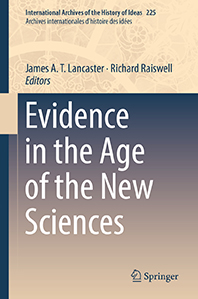 The motto of the Royal Society—Nullius in verba—was intended to highlight the members’ rejection of received knowledge and the new place they afforded direct empirical evidence in their quest for genuine, useful knowledge about the world. But while many studies have raised questions about the construction, reception and authentication of knowledge, Evidence in the Age of the New Sciences is the first to examine the problem of evidence at this pivotal moment in European intellectual history. What constituted evidence—and for whom? Where might it be found? How should it be collected and organized? What is the relationship between evidence and proof? These are crucial questions, for what constitutes evidence determines how people interrogate the world and the kind of arguments they make about it.
The motto of the Royal Society—Nullius in verba—was intended to highlight the members’ rejection of received knowledge and the new place they afforded direct empirical evidence in their quest for genuine, useful knowledge about the world. But while many studies have raised questions about the construction, reception and authentication of knowledge, Evidence in the Age of the New Sciences is the first to examine the problem of evidence at this pivotal moment in European intellectual history. What constituted evidence—and for whom? Where might it be found? How should it be collected and organized? What is the relationship between evidence and proof? These are crucial questions, for what constitutes evidence determines how people interrogate the world and the kind of arguments they make about it.
In this important new collection, Lancaster and Raiswell have assembled twelve studies that capture aspects of the debate over evidence in a variety of intellectual contexts. From law and theology to geography, medicine and experimental philosophy, the chapters highlight the great diversity of approaches to evidence-gathering that existed side by side in the sixteenth and seventeenth centuries. In this way, the volume makes an important addition to the literature on early science and knowledge formation, and will be of particular interest to scholars and advanced students in these fields.
Evidence in the Age of the New Sciences
Editors: James A T Lancaster and Richard Raiswell
Series Title: International Archives of the History of Ideas 225
Published: 2018
Publisher: Springer International Publishing
eBook ISBN: 978-3-319-91869-3
DOI: 10.1007/978-3-319-91869-3
Hardcover ISBN: 978-3-319-91868-6
Series ISSN: 0066-6610
Bo Andersson, Lucinda Martin, Leigh Penman and Andrew Weeks, eds (2018), Jacob Böhme and His World
Bo Andersson, Lucinda Martin, Leigh Penman and Andrew Weeks, eds
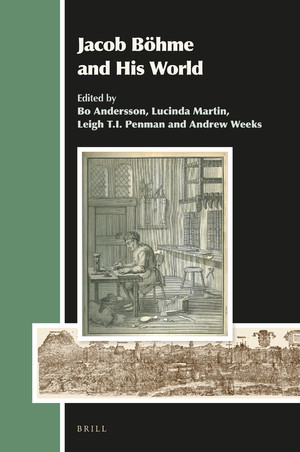 Jacob Böhme (1575–1624) is famous as a shoemaker and spiritual author. His works and thought are frequently studied as a product of his mystical illumination.
Jacob Böhme (1575–1624) is famous as a shoemaker and spiritual author. His works and thought are frequently studied as a product of his mystical illumination.
Jacob Böhme and His World adopts a different perspective. It seeks to demystify Böhme by focusing on aspects of his immediate cultural and social context and the intellectual currents of his time, including Böhme’s writing as literature, the social conditions in Görlitz, Böhme’s correspondence networks, a contemporary “crisis of piety,” Paracelsian and kabbalistic currents, astrology, astronomy and alchemy, and his relationship to other dissenting authors. Relevant facets of reception include Böhme’s philosophical standing, his contributions to pre-Pietism, and early English translations of his works.
Publisher: Brill
Publication Date: 12 November 2018
ISBN: 978-90-04-38509-2
DOI: https://doi.org/10.1163/9789004385092
Peter Harrison and Jon H. Roberts, Eds. (2019), Science without God? Rethinking the History of Scientific Naturalism
Edited by Peter Harrison and Jon H. Roberts
Oxford University Press, 2019
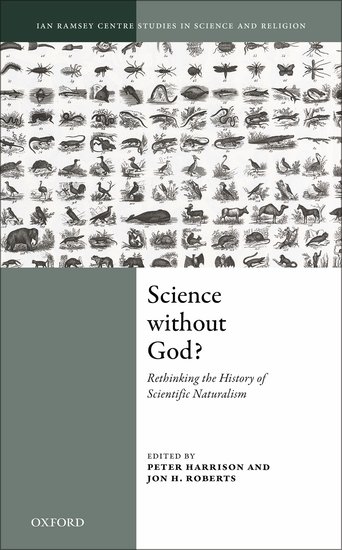 Can scientific explanation ever make reference to God or the supernatural? The present consensus is no; indeed, a naturalistic stance is usually taken to be a distinguishing feature of modern science. Some would go further still, maintaining that the success of scientific explanation actually provides compelling evidence that there are no supernatural entities, and that true science, from the very beginning, was opposed to religious thinking. Science without God? Rethinking the History of Scientific Naturalism shows that the history of Western science presents us with a more nuanced picture. Beginning with the naturalists of ancient Greece, and proceeding through the middle ages, the scientific revolution, and into the nineteenth century, the contributors examine past ideas about 'nature' and 'the supernatural'. Ranging over different scientific disciplines and historical periods, they show how past thinkers often relied upon theological ideas and presuppositions in their systematic investigations of the world. In addition to providing material that contributes to a history of 'nature' and naturalism, this collection challenges a number of widely held misconceptions about the history of scientific naturalism.
Can scientific explanation ever make reference to God or the supernatural? The present consensus is no; indeed, a naturalistic stance is usually taken to be a distinguishing feature of modern science. Some would go further still, maintaining that the success of scientific explanation actually provides compelling evidence that there are no supernatural entities, and that true science, from the very beginning, was opposed to religious thinking. Science without God? Rethinking the History of Scientific Naturalism shows that the history of Western science presents us with a more nuanced picture. Beginning with the naturalists of ancient Greece, and proceeding through the middle ages, the scientific revolution, and into the nineteenth century, the contributors examine past ideas about 'nature' and 'the supernatural'. Ranging over different scientific disciplines and historical periods, they show how past thinkers often relied upon theological ideas and presuppositions in their systematic investigations of the world. In addition to providing material that contributes to a history of 'nature' and naturalism, this collection challenges a number of widely held misconceptions about the history of scientific naturalism.
Series: Ian Ramsey Centre Studies in Science and Religion
Hardcover: 288 pages
Publisher: Oxford University Press (March 17, 2019)
Language: English
ISBN-10: 0198834586
ISBN-13: 978-0198834588
Adrian Athique and Emma Baulch, Eds. (2019), Digital Transactions in Asia: Economic, Informational, and Social Exchanges
Edited by Adrian Athique and Emma Baulch
Routledge, 2019
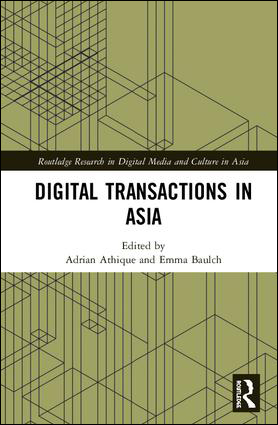 This book presents a comprehensive overview of transactional forms of the digital across the Asian region by addressing the platforms and infrastructures that shape the digital experience. Contributors argue that each and every encounter mediated by the digital carries with it a functional exchange, but at the same time each transaction also implies an exchange based on social relationships for the digital age. In capturing the digital revolution through case studies of economic, informational, and social exchanges from across the larger Asian region, the book offers a richly contextualized and comparative account of the pervasive nature of the digital as both a medium for action and a medium of record.
This book presents a comprehensive overview of transactional forms of the digital across the Asian region by addressing the platforms and infrastructures that shape the digital experience. Contributors argue that each and every encounter mediated by the digital carries with it a functional exchange, but at the same time each transaction also implies an exchange based on social relationships for the digital age. In capturing the digital revolution through case studies of economic, informational, and social exchanges from across the larger Asian region, the book offers a richly contextualized and comparative account of the pervasive nature of the digital as both a medium for action and a medium of record.
This publication follows the very successful Digital Transactions in Asia symposia at QUT in 2017 and at De La Salle University in Manila in 2018.
- Series: Routledge Research in Digital Media and Culture in Asia
- Hardcover: 316 pages
- Publisher: Routledge; 1 edition (March 22, 2019)
- Language: English
- ISBN-10: 1138353965
- ISBN-13: 978-1138353961
Ian Hunter and Richard Whatmore, Eds. (2019), Philosophy, Rights and Natural Law: Essays in Honour of Knud Haakonssen
Edited by Ian Hunter and Richard Whatmore
Edinburgh University Press, 2019
 A celebratory collection of essays on philosophy, rights and natural law, inspired by the work of Knud Haakonssen
A celebratory collection of essays on philosophy, rights and natural law, inspired by the work of Knud Haakonssen
Over his long and illustrious career, Knud Haakonssen has explored the role of natural law in formulating doctrines of obligation and rights in accordance with the interests of early modern polities and churches. A hallmark of his approach has been to show how natural law in early modern Europe was not a unified doctrine, but a field of crosscutting idioms that prosecuted competing political and juridical programmes.
The essays collected in this volume range across this exciting and contested field. These studies acknowledge Haakonssen's immense academic achievement and give us new insights into the cultural and political role of law and rights in a variety of historical contexts and circumstances.
Key Features
- Crosses national, disciplinary, intellectual and ideological borders
- Deals with a wide range of contexts and aspects over a chronological period from the Reformation to the aftermath of the French Revolution
- Covers an unusually wide range of questions at the intersection between natural law, religion and politics
- Contributors include Maria Rosa Antognazza, James Harris, Simone Zurbuchen and John Cairns
Paul Tyson (2019), Kierkegaard's Theological Sociology: Prophetic Fire for the Present Age
Paul Tyson
Cascade Books, 2019
 Kierkegaard developed a distinctive type of sociology in the 1840s—a theological sociology. Looking at society through the lens of analysis categories such as worship, sin, and faith, Kierkegaard developed a profoundly insightful way of understanding how, for example, the modern mass media works. He gets right inside the urban world of Golden Age Denmark, and its religion, and analyses “the present age” of consumption, comfort, competition, distraction, and image-construction with astonishing depth. To Kierkegaard worship centers all individuals and all societies; hence his sociology is doxological. This book argues that we also live in the present age Kierkegaard described, and our way of life can be understood much better through Kierkegaard’s lens than through the methodologically materialist categories of classical sociology. As social theory itself has moved beyond classical sociology, the social sciences are increasingly open to post-methodologically-atheist approaches to understanding what it means to be human beings living in social contexts. The time is right to recover the theological resources of Christian faith in understanding the social world we live in. The time has come to pick up where Kierkegaard left off, and to start working towards a prophetic doxological sociology for our times.
Kierkegaard developed a distinctive type of sociology in the 1840s—a theological sociology. Looking at society through the lens of analysis categories such as worship, sin, and faith, Kierkegaard developed a profoundly insightful way of understanding how, for example, the modern mass media works. He gets right inside the urban world of Golden Age Denmark, and its religion, and analyses “the present age” of consumption, comfort, competition, distraction, and image-construction with astonishing depth. To Kierkegaard worship centers all individuals and all societies; hence his sociology is doxological. This book argues that we also live in the present age Kierkegaard described, and our way of life can be understood much better through Kierkegaard’s lens than through the methodologically materialist categories of classical sociology. As social theory itself has moved beyond classical sociology, the social sciences are increasingly open to post-methodologically-atheist approaches to understanding what it means to be human beings living in social contexts. The time is right to recover the theological resources of Christian faith in understanding the social world we live in. The time has come to pick up where Kierkegaard left off, and to start working towards a prophetic doxological sociology for our times.
Almond, Philip C. (2019), Bóg: Nowa Biographia
Almond, Philip C.
Bellona, 2019
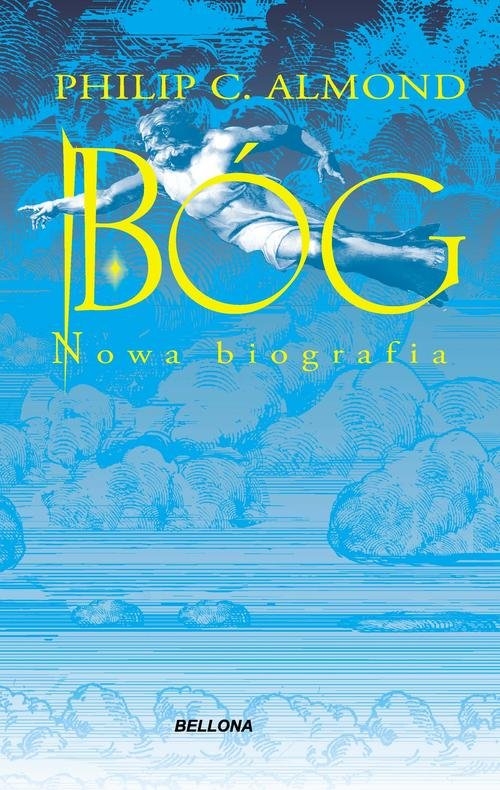 Polish translation of God: A New Biography (I.B. Tauris, 2018)
Polish translation of God: A New Biography (I.B. Tauris, 2018)
Penman, Leigh T.I. (2019), Hope and Heresy: The Problem of Chiliasm in Lutheran Confessional Culture, 1570–1630
Leigh T.I. Penman
Springer, 2019
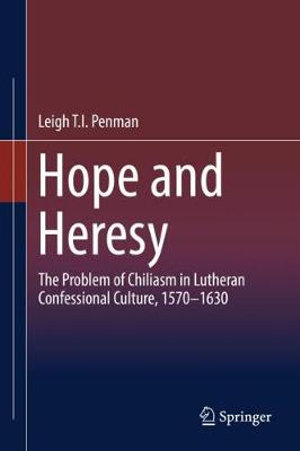 Apocalyptic expectations played a key role in defining the horizons of life and expectation in early modern Europe. Hope and Heresy investigates the problematic status of a particular kind of apocalyptic expectation—that of a future felicity on earth before the Last Judgement—within Lutheran confessional culture between approximately 1570 and 1630.
Apocalyptic expectations played a key role in defining the horizons of life and expectation in early modern Europe. Hope and Heresy investigates the problematic status of a particular kind of apocalyptic expectation—that of a future felicity on earth before the Last Judgement—within Lutheran confessional culture between approximately 1570 and 1630.
Among Lutherans expectations of a future felicity were often considered manifestations of a heresy called chiliasm, because they contravened the pessimistic apocalyptic outlook at the core of confessional identity. However, during the late sixteenth and early seventeenth centuries, individuals raised within Lutheran confessional culture—mathematicians, metallurgists, historians, astronomers, politicians, and even theologians—began to entertain and publicise hopes of a future earthly felicity. Their hopes were countered by accusations of heresy. The ensuing contestation of acceptable doctrine became a flashpoint for debate about the boundaries of confessional identity itself.
Based on a thorough study of largely neglected or overlooked print and manuscript sources, the present study examines these debates within their intellectual, social, cultural, and theological contexts. It outlines, for the first time, a heretofore overlooked debate about the limits and possibilities of eschatological thought in early modernity, and provides readers with a unique look at a formative time in the apocalyptic imagination of European culture.
Tyson, Paul (2019), Seven Brief Lessons on Magic
Paul Tyson
Cascade Books (WIPF and Stock Publisher)
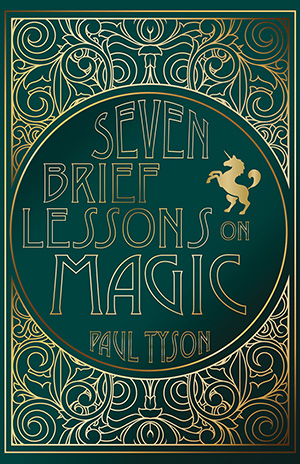 Is magic real? Could anything be real that can’t be quantified or scientifically investigated? Are qualities like love, beauty, and goodness really just about hormones and survival? Are strangely immaterial things, like thought and personhood, fully explainable in scientific terms? Does nature itself have any intrinsic value, mysterious presence, or transcendent horizon? Once we ask these questions, the answer is pretty obvious: of course science can’t give us a complete picture of reality. Science is very good at what it is good at, but highly important aspects of human meaning are simply outside of science’s knowledge range. So how might we better relate scientific facts to qualitative mysteries? How might we integrate our powerful factual knowledge with wisdom about the higher meaning of things? This book defines magic as the real qualities and mysteries of the world that science just can’t grasp. It looks at how we came to put magic in the box of subjective make-believe. It explores how we might get it out of that box and back into our understanding of reality.
Is magic real? Could anything be real that can’t be quantified or scientifically investigated? Are qualities like love, beauty, and goodness really just about hormones and survival? Are strangely immaterial things, like thought and personhood, fully explainable in scientific terms? Does nature itself have any intrinsic value, mysterious presence, or transcendent horizon? Once we ask these questions, the answer is pretty obvious: of course science can’t give us a complete picture of reality. Science is very good at what it is good at, but highly important aspects of human meaning are simply outside of science’s knowledge range. So how might we better relate scientific facts to qualitative mysteries? How might we integrate our powerful factual knowledge with wisdom about the higher meaning of things? This book defines magic as the real qualities and mysteries of the world that science just can’t grasp. It looks at how we came to put magic in the box of subjective make-believe. It explores how we might get it out of that box and back into our understanding of reality.
Turner, Graeme (2019) Essays in Media and Cultural Studies: In Transition
Graeme Turner
CRC Press (Taylor and Francis Group)
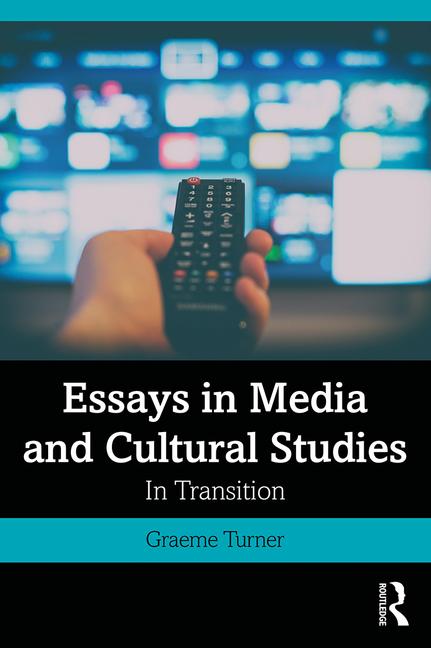 Spanning a decade of key research, this collection brings together a selection of essays and chapters from leading media scholar Graeme Turner for the first time.
Spanning a decade of key research, this collection brings together a selection of essays and chapters from leading media scholar Graeme Turner for the first time.
The organising theme of transition focuses on both the state of the media as it continues its evolution into the digital era, and the fields of media and cultural studies as they grapple with modifying their approaches and assumptions in response to the changing dynamics of the systems they study. In their own attempts to understand a range of contemporary moments over the decade, these essays also provide a personal history of Graeme Turner’s participation in the key debates within media and cultural studies. The essays deal with the shifting states of television, with the changing relation between the media and the state, the rise of celebrity, and the role of a critical agenda for media and cultural studies in the future. The collection is introduced and concluded by two new essays, respectively assessing the recent past and the necessary futures for these fields of study.
Providing key insights into a range of topics, this book is ideal for students and scholars looking to deepen their understanding of the transitionary nature of media and cultural studies.
Mehigan, Tim (2020) Robert Musil and the Question of Science: Ethics, Aesthetics, and the Problem of the Two Cultures
Tim Mehigan
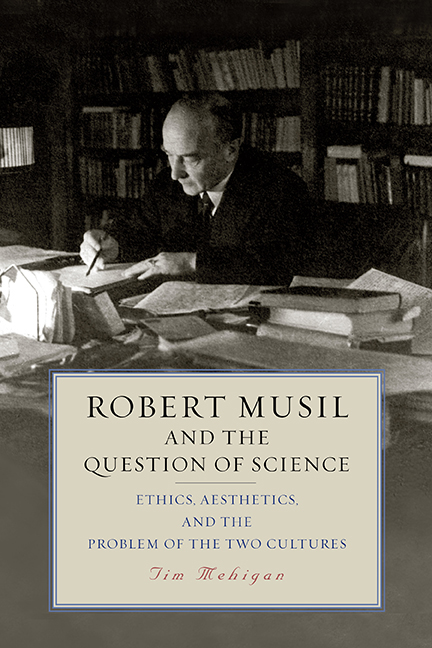 The modern era is marked by the separate life of two cultures of understanding, one derived from art and its discourses, the other from science and its practices. This "problem of the two cultures" (as coined by C.P. Snow) describes the difficulty of bringing these distinct ways of understanding the world together.
The modern era is marked by the separate life of two cultures of understanding, one derived from art and its discourses, the other from science and its practices. This "problem of the two cultures" (as coined by C.P. Snow) describes the difficulty of bringing these distinct ways of understanding the world together.
The works of the Austrian author Robert Musil (1930-33) represent the most distinguished treatment of this problem in the modern era. Nevertheless, doubts persist about Musil's true intentions. Did he maintain that the separation between art and science could be resolved? Or did he rise above the problem by advocating a new order of being or "other condition" that would dispense with it altogether? Mehigan's study moves these questions to center stage. He lends new clarity to the debate about Musil's position in regard to the two cultures by shining a light on ethical questions the author ultimately wished to clarify. It is the shape of a hard-won ethics, Mehigan argues, that provides the key to an effective response to the problem of the two cultures - an ethics, in the end, that can only be put forward as a new kind of art.
Almond, Philip C. (2020) The Antichrist: A New Biography
Philip C. Almond
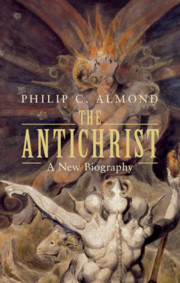 The malign figure of the Antichrist endures in modern culture, whether religious or secular; and the spectral shadow he has cast over the ages continues to exert a strong and powerful fascination. Philip C. Almond tells the story of the son of Satan from his early beginnings to the present day, and explores this false Messiah in theology, literature and the history of ideas. Discussing the origins of the malevolent being who at different times was cursed as Belial, Nero or Damien, the author reveals how Christianity in both East and West has imagined this incarnation of absolute evil destined to appear at the end of time. For the better part of the last two thousand years, Almond suggests, the human battle between right and wrong has been envisaged as a mighty cosmic duel between good and its opposite, culminating in an epic final showdown between Christ and his deadly arch-nemesis.
The malign figure of the Antichrist endures in modern culture, whether religious or secular; and the spectral shadow he has cast over the ages continues to exert a strong and powerful fascination. Philip C. Almond tells the story of the son of Satan from his early beginnings to the present day, and explores this false Messiah in theology, literature and the history of ideas. Discussing the origins of the malevolent being who at different times was cursed as Belial, Nero or Damien, the author reveals how Christianity in both East and West has imagined this incarnation of absolute evil destined to appear at the end of time. For the better part of the last two thousand years, Almond suggests, the human battle between right and wrong has been envisaged as a mighty cosmic duel between good and its opposite, culminating in an epic final showdown between Christ and his deadly arch-nemesis.

 Polish translation of
Polish translation of